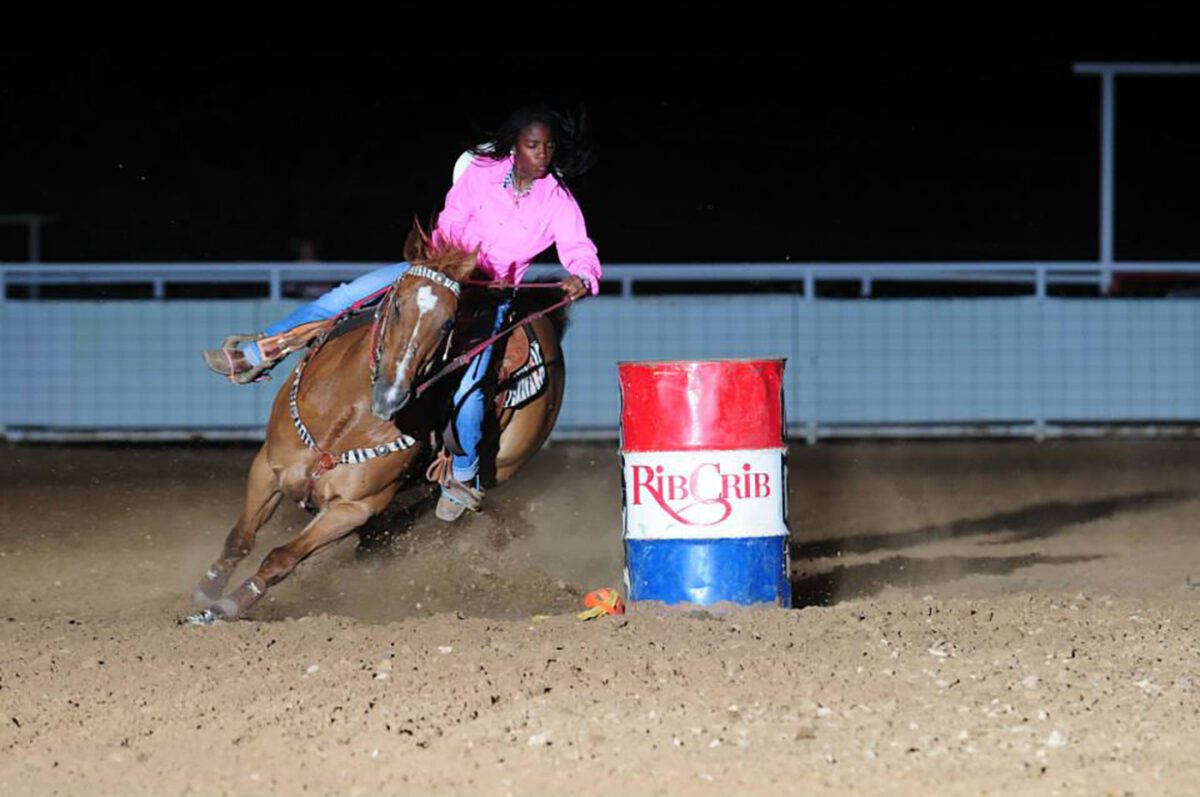Cowboys are intrinsic to both America culture and the cattle industry, the latter of which gave rise to beloved American rodeo events. Black cowboys have been part of that world since the nation’s beginning, but covert and not-so-covert policies often prohibited them from participating in competitions. This led to the rise of all-Black rodeos, many of which are still running strong in Oklahoma today.
“In 1956, my dad, Roy, my granddad and my uncle started the Okmulgee County Roundup Club, along with other Black businessmen,” says Kenneth LeBlanc, who mentions that there are Black rodeos all over Oklahoma. “That’s how the Okmulgee Roy LeBlanc Invitational Rodeo (ORLIR) got started. My dad was a calf roper, and there was an Okmulgee rodeo. But the reason they started their club is that Blacks were only allowed to participate after the rodeo, not during the rodeo. And my granddad got there to watch, and they told him there was a colored section he had to sit in.”
As the nation’s oldest continually running all-Black rodeo, ORLIR welcomes over 1,300 spectators, cowboys and cowgirls annually, who converge on Okmulgee during the second week of August. 2024 was the rodeo’s 69th year.
A former steer wrestler, LeBlanc is retired. However, his brother, Okmulgee native Clarence LeBlanc, won the International Pro Rodeo Association steer wrestling competition three times, and is the first-ever Black steer wrestling world champion.

The historic all-Black town of Boley hosts the Boley Rodeo, which was founded in 1903 – four years prior to Oklahoma statehood. Held every Memorial Day weekend and drawing thousands of spectators and rodeo athletes, 2024 marked its 121st year.
A bull rider and steer wrestler from Tulsa, Marcous Friday is heavily involved in Oklahoma’s Black rodeo community and mentions that his grandfather was a tie-down roper. For decades, Friday has been announcing at Oklahoma’s Black rodeos – and events across the nation.
“For the second time, we’ll do the National Black Cowboy Awards and Gala at the National Cowboy and Western Heritage Museum in Oklahoma City in February 2025,” says Friday. The inaugural event was in February of this year.
Michael R. Grauer, the National Cowboy and Western Heritage Museum’s McCasland Chair of Cowboy Culture/Curator of Cowboy Collections and Western Art, says that the museum “recognizes Black cowboys. We first inducted [legendy Black rodeo performer] Bill Pickett into the National Rodeo Hall of Fame in 1972.”
The museum offers numerous exhibits featuring Black cowboys, and hosted a Black cowboy traveling exhibit in 2023. The museum has given awards to 13 more Black cowboys, primarily for rodeo expertise. These include Seminole native Cleo Hearn, who was the first Black student to attend college on a rodeo scholarship. Although he was a Professional Rodeo Cowboy Association (PRCA) member, he was not allowed to compete in regular rodeos due to his race. So, Hearn founded the Cowboys of Color Rodeo Tour, which continues today during tours through Oklahoma and Texas.

A Black Cowboy of Note
Of the approximately 35,000 cowboys working the post-Civil War West, about 25% of them were Black. Some cowboys transitioned to Wild West shows and rodeos, rising to prominence, including Bill Pickett (1870-1932) aka the “Dusky Deamon.” A native Texan, Pickett was a rodeo-er for over 25 years with the famous Miller Brothers 101 Ranch Real Wild West Show near Ponca City. The father of steer wrestling and the first Black cowboy movie star, Pickett is buried in Marland.
Main image cutline: The Okmulgee Roy LeBlanc Invitational Rodeo has been running in Oklahoma for nearly 70 years. Photo courtesy ORLIR






















